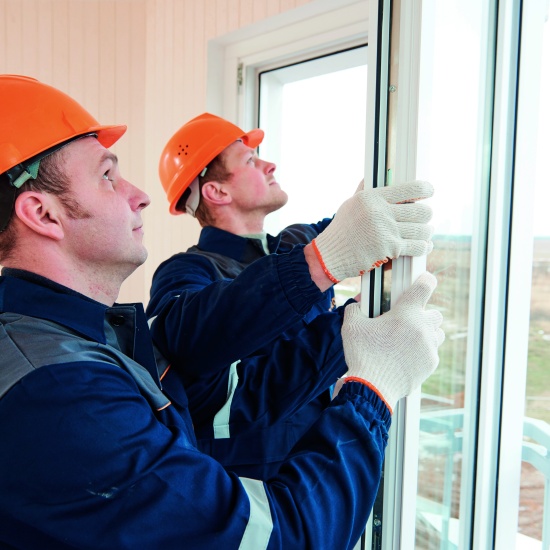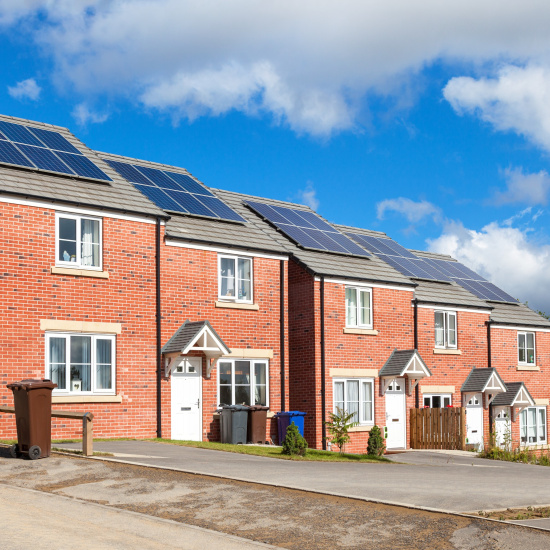Home Energy Upgrade Q&A
Dr. Ciaran Byrne, Director of National Retrofit and a member of the Executive Leadership Team at SEAI was a guest on The Last Word with Matt Cooper on Today FM to discuss the benefits and barriers of upgrading the energy efficiency of your home. Below we have summarised a few of the items discussed.
Matt:
I've been hearing from people who are doing external retrofits and internal retrofits. What is this?
Ciaran:
It means anything to do with increasing and improving the energy performance of your home, so you can start at the very basic level, which can be as simple as installing attic insulation, right up to the gold-plated level, which is what we call the One Stop Shop and doing an entire retrofit - a total energy improvement of your home all in one go. We look at the energy performance of your home as it currently is, and then add on the measures to get the home to a BER B2 level of energy performance.
Matt:
What about windows?
Ciaran:
Windows are part of the package, but what we recommend is to get the wall insulation done first, because putting windows into a poorly insulated home doesn't make a whole lot of difference in terms of the energy performance.
Matt:
Is it better, if possible, to do external wall insulation in terms of disruption to the home and is it cheaper?
Ciaran:
It depends on the individual home. What we say is to make sure the attic is done. That's the first step and it's the cheapest, quickest, easiest one to do. The next step is, if you can, to pump your cavity walls with bead or foam which is relatively straight forward and simple. From the outside of the house, they drill little holes in the walls pumping bonded insulated bead inside the cavity. It could take an afternoon or two afternoons to do and is relatively cost effective.
When you can't pump a cavity wall, we then do external wall insulation and if you can't do that, we do internal wall insulation, but internal wall installation is not as common because you must go through all of the walls, and typically we see that done on a much bigger renovation.
Matt:
How do you do the external wall installation?
Ciaran:
We call it the wrap; they literally stick the insulation on the front of your house and then they render it with plaster and then you can paint over it. It's a fantastic job that fundamentally transforms the look of your house. It improves the insulation and the energy performance of the house, but it's also very aesthetically pleasing.
Matt:
So, you've done the attic. You've done the walls. What about the floors?
Ciaran:
Absolutely, you can do floors, but not too many people do their floors because that is the one measure that causes a lot of disruption. Where we see floor insulation done is typically when a home is being completely renovated.
For the One Stop Shop, where you do the whole retrofit in one go, that's where we see the floor insulation being done because people are often doing additional building work as well.
Matt:
So how much of this is associated with putting in a heat pump?
Ciaran:
Well, there is a link, because a heat pump is like a fridge in reverse and needs the house to be at a certain level of insulation to make it efficient, so, if you have leaks all over your home and you install a heat pump, it won't be efficient.
Matt:
According to some of our listeners, a heat pump is associated with extraordinary costs, and they end up paying more on their bills then before they installed it.
Ciaran:
There's a couple of moving parts in relation to a heat pump. When a home is insulated enough, it's airtight, so, when it's heated up, it stays warm. In relation to costing, you need to make sure that you've got the right size of heat pump for your home and that it's installed correctly and when that's the case, a heat pump is very efficient.
Matt:
Typically for a three bed, semi, what size heat pump would you need, and what size for a bigger house?
Ciaran:
It's difficult to get into specific sizes for heat pumps because it depends on each individual house. But typically for a semi-detached home, and we've looked across our schemes from last year, to get the home from a BER rating of E1 to an A2, we're looking at €59,000 overall cost with an average of €22,000 in grants, meaning the net cost to the homeowner was about €37,000 and that fundamentally transformed the energy performance of that home. For a heat pump, the median cost is about €14,500 and there is a €6,500 grant with that.
Matt:
How difficult is it to get a grant?
Ciaran:
Not difficult at all in my opinion. We had 47,000 people last year that applied for and received a grant from SEAI. We had nearly 60,000 applications in the system last year. For the individual measure scheme, you log on, put in your MPRN number, we check that you didn't get the grant before, and then we send out an automated letter.
Matt:
Where do you get a contractor, and can you trust them to give you a fair price?
Ciaran:
We have a list of SEAI registered contractors. We check their tax for insurance and make sure they're qualified to carry out the works and that contractor list is on our website. On our individual energy schemes, we have approximately 1,400 contractors on the scheme that are registered up and down the country. When you're applying, you nominate the contractor in the online application. For the One Stop Shop, which is doing the whole energy upgrade at once, it's more of an involved process. The contractor will come out to your home and do a much more detailed energy assessment.
Matt:
Do you have to have all the work done before you can apply for the grant?
Ciaran:
No, but you must apply for the grant and get approval before you start the work, and that's the case for any government grant. You do the online application, get an e-mail notification that you've been approved for the grant, and only then do you progress with your works.
Matt:
What about solar panels is that included?
Ciaran:
Yes, it is. So, in your home energy upgrade journey, the first thing you do is assess your home and figure out what measures need to be carried out. The second thing is insulation, which is the most cost-effective measure you can carry out to make your home more energy efficient. The third step is to add renewables, and solar PV comes in under renewables. You put it on the roof, and it contributes towards the electrical cost of the home.
Matt:
Ok and what grants are available there?
Ciaran:
The maximum grant available for solar PV is €2,100
Matt:
How much roof space do you need?
Ciaran:
For a typical home you would install a 2-kilowatt system. That's about 6-7 panels which is around 1 metre high by 0.5 metre wide. Your typical 3-bed-semi would be able to accommodate a 2KW system. When you go and get the solar panels, they will send out a surveyor who will look at the aspect of your house to see where the panels are best placed. In a small number of homes, they may not be able to accommodate solar panels because of the dynamic of the roof.
Matt:
Do you need a battery to store the electricity?
Ciaran:
No, that's not strictly necessary, but what we'd say for individuals is to look at their particular use case. So, if you have two people and they leave the house at 7:00 in the morning, come back in 7:00 in the evening and the solar energy is being generated during the day, there may be a use case there for having a battery. You can either sell surplus energy back to the grid in what's known as the Clean Export Guarantee.
Matt:
Can the energy upgrade costs be excessive for people because they're looking to do too much work? As in, they're trying to get to an A1 rating, which may not actually really be achievable.
Ciaran:
Yes, a lot of people want to get low BER rated homes like BER G up to an A1 which would take an extraordinary amount of work, when a BER B2 is perfectly good.
Listen back to the full interview


